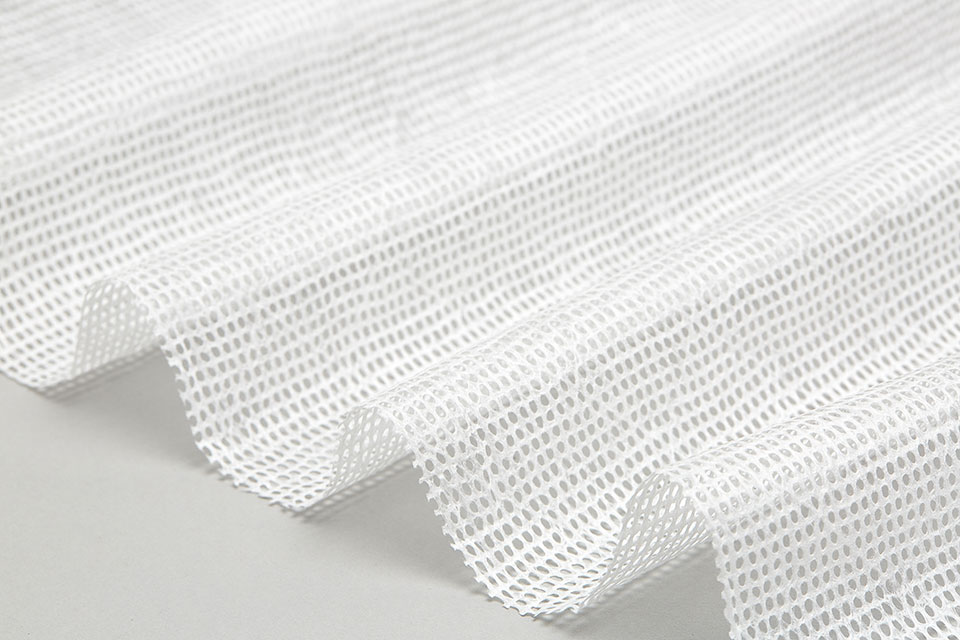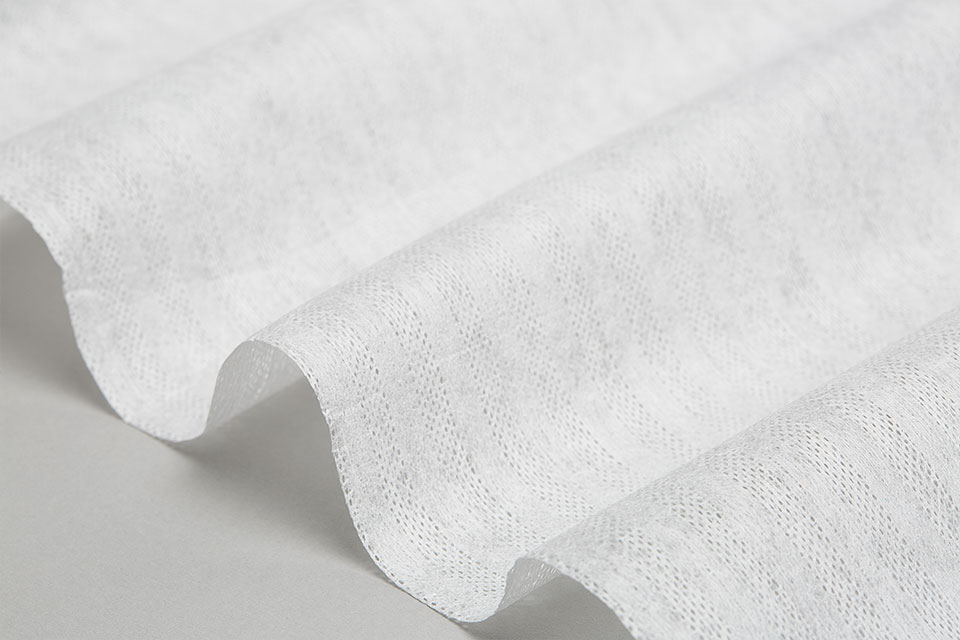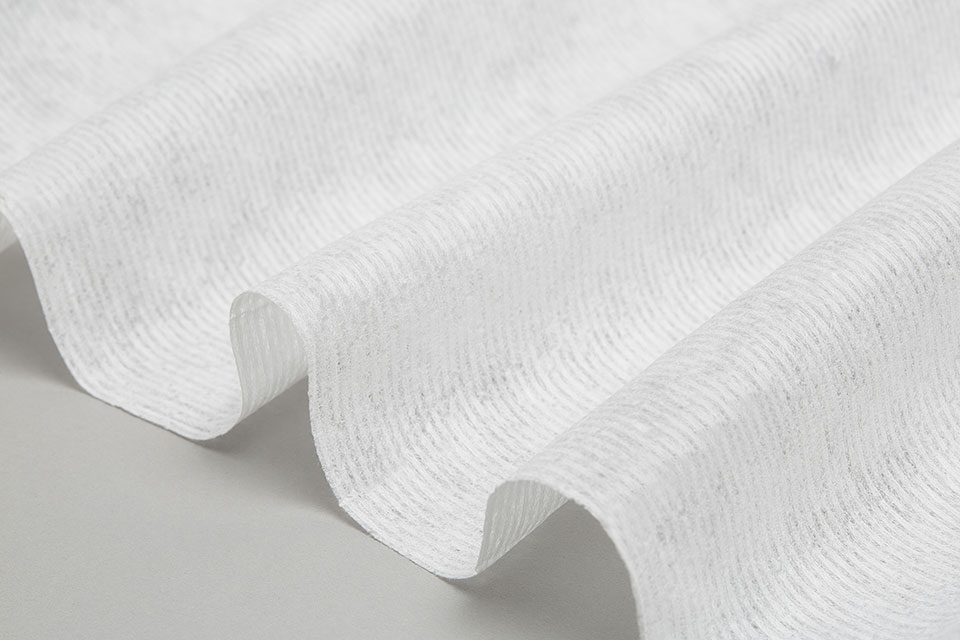What is hydroentangled nonwoven? Here we will bring you some basic knowledge about hydroentangled nonwoven.
The hydroentangled process also called spunlace , which uses the high pressure of the machine to stab water on the surface of the cotton fiber from top to bottom, making it change from a dry state to a wet state, and the cotton fibers are entangled with each other to have horizontal and vertical tension, and then finally it becomes fabric. Most of the non-woven fabrics on the market are made of chemical fibers, such as polyester fibers, polyamide fibers, polyacrylonitrile fibers, viscose fibers, etc. In addition to the above chemical fibers, natural fibers such as cotton, hemp, wool, and silk can also be used to produce non-woven fabrics.
The specific steps of the hydroentanglement nonwoven process are as below:
1. Cotton feeding. In this process, workers take raw cotton fiber and put them on the floor under the machine. Then the feeding machine moves automatically catching the fiber and delivering them into the channel for the next process.
2. Carding. During this process, the cleaning machine gets rid of foreign maters, small pieces of iron, and small pieces of cottonseeds, etc.
3. Cross lapping. Currently, there are two types of lapping, one is parallel lapping and another is cross lapping.
4. Drafting or tension. In this process, the cotton fiber web is drafted 2-3 times longer.
5. Spunlace. Spunlacing is the most important step in the production process. By high pressure, the water needle comes through the cotton web, making the cotton fiber entangle together into a web and form like the cloth.
6. Rolling. After spun lacing, the material would be rolled to be a master roll.
7. Bleaching and drying. The grey color cotton master rolls will be put into a bleaching kier. In the kier we use peroxide with high temperature and high water pressure to bleach the master roll for 4 hours. After the bleaching, the master roll will be dried and packed.

Cotton spunlace nonwoven fabric was independently researched and developed by Winner Medical in 2005. The Hydroentanglement Fabric Features are as below:
1. The raw material we use is unbleached raw cotton with a length of fibers more than 28 to 29 mm, but the length of fibers from bleached cotton is less than 20 to 22 mm. The most important difference is that the wax originally covered on the cotton fiber will protect the fiber and not breaking during the production process like carding and spun lace. When you use bleached cotton to produce the non-woven, the fibers will easily break during the process of carding and spun lace. As a result, the strength of PurCotton's spunlace fabric is much better than that other cotton non-woven.
2. The most important part of our patent is the bleaching method. We bleach the fabric with high temperature and high pressure in the final step. Through this process, we could not only get rid of the wax, dust, and a small piece of cottonseeds but also kill the bacteria in the products. On the contrary, the others produce the non-woven using bleached cotton, they manufacture in a non-clean big workshop and delivery the spunlace which contain more dust, more bio-burden to their customer directly from this workshop.

The hydroentangled nonwoven fabric has the characteristics of flame retardant, antibacterial, water repellent and antistatic, etc., which makes it an ideal material for protective clothing. The continued rise in the global outbreak has accelerated the development of hydroentangled nonwoven fabrics for protective garments. According to SAGE journals, the processing conditions for spunlace nonwoven that are most suitable for disposable and protective clothing such as surgical gowns, drapes and lab coats are studied. It was observed that low weight fabrics of 80 g/m2 hydroentangled at low waterjet pressure of 60 bars were suitable for use due to their higher air and water vapour permeability as well as higher pore size distribution. These fabrics meet the requirements for protective garments, surgical gowns, nurses' uniforms and laboratory coats.
Winner PurCotton produces 100% cotton hydroentangled nonwoven fabrics with more than three decades of medical background to help your brand sell well in the local market. Please feel free to inquiry about it.

You may be interested in Winner Nowovens' skincare OEM, wholesale pads, spunlace wipes, wholesale tampons, wholesale newborn diapers, etc. Click for more information.
References:
1) Ogunleye, C., & Anandjiwala, R. (2015). Development of hydroentangled nonwoven fabrics for the protective garments. SAGE Journal, 46 (2). doi: https://doi.org/10.1177%2F1528083715580520